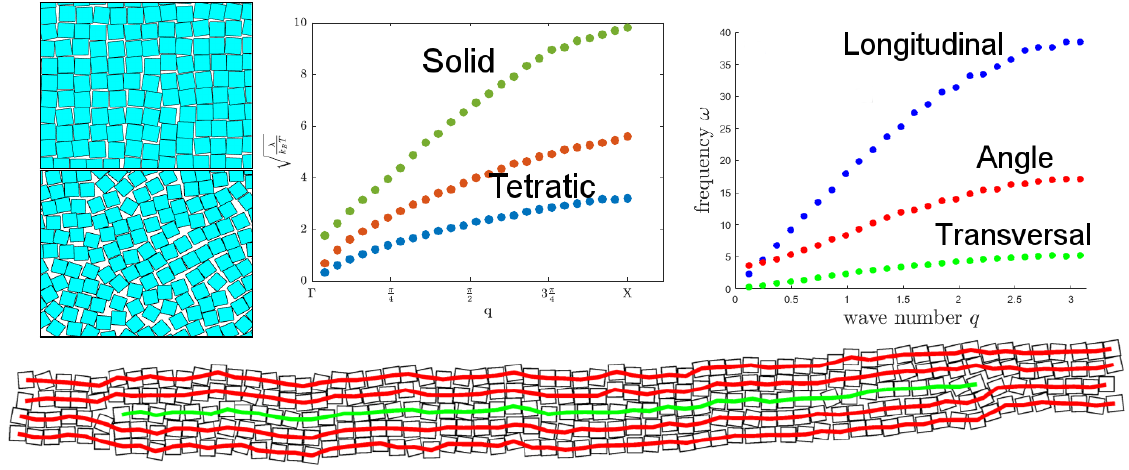Correlation-function based elasticity theory for systems with anisotropic particles
We quantitatively work out the elastic equations of continuum mechanics and the elastic free energies based on our previous fundamental work developing a unified framework capturing the reversible couplings of Nambu-Goldstone modes. Starting point of our coarse-graining procedure is the microscopic level capturing the coupling of rotational and translational motion of particles with simple well-defined shapes of different symmetries. Working in reciprocal space enables us to include finite concentrations of local defects throughout. Density functional and correlation function theory can then be employed to study the thermodynamic and mechanical properties of complex defect-rich crystals.

